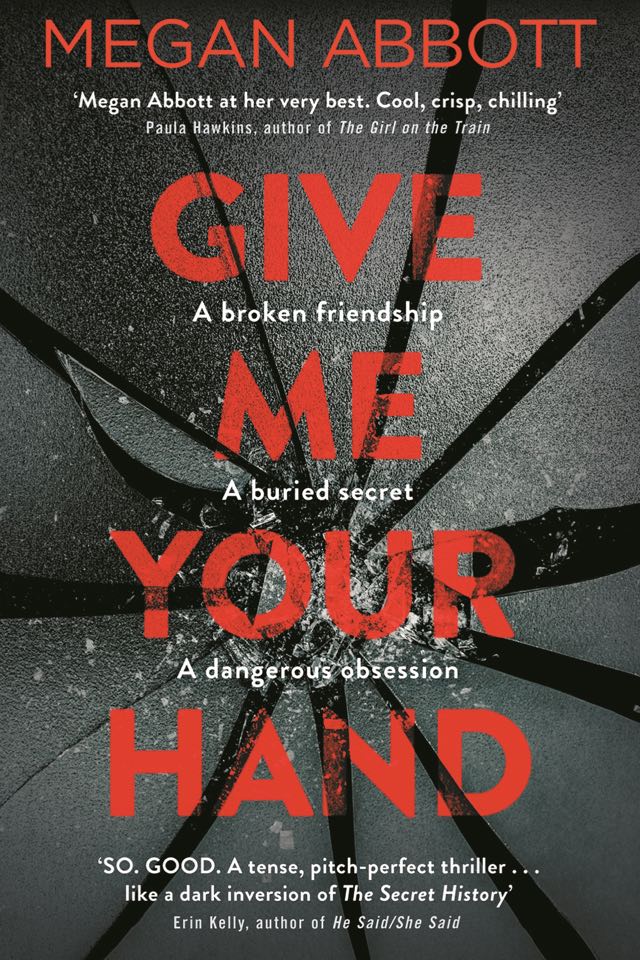Give Me Your Hand
— Ilana Masad
Megan Abbott’s novels often include ambitious and violent women, and it appears to be something of a fascination for her—a worthy subject, given the rarity of women being allowed to be either ambitious or violent without repercussions. Give Me Your Hand, Abbott’s newest novel, places reproductive systems at its center, but not in the way we’re used to seeing them addressed. Instead of the womb’s power to create life, the novel examines its more painful aspects in the form of scientific research into premenstrual dysphoric disorder or PMDD, a still largely ignored and often doubted condition that between three and eight percent of women in the US have been diagnosed with (it often goes undiagnosed or is misdiagnosed) and which has been linked to increased suicide rates. PMDD doesn’t only affect women—not all women have menstrual cycles, and not all those who have menstrual cycles are women—but in a medical system that still ignores women’s pain, amidst a wider cultural stance that sees women’s rage as unacceptable, looking at a disorder that causes strong, sometimes violent emotion and pain in women is a radical, politically charged act. Give Me Your Hand focuses on three driven and ambitious women working in science, none of whom suffer from the disorder that hangs menacingly in the background.

Kit Owens, who narrates the novel, first discovers her love of the field as a teenager, but only after she meets Diane Fleming does she become ambitious. Working class and raised by a single mother, Kit knows she’s defying the odds simply by her presence on Dr. Lena Severin’s team, a woman who is herself defying the odds when she secures significant funding into her PMDD research. Diane, raised in a wealthy household with a dysfunctional mother, has a terrible secret—a violent one. But she wasn’t the victim, at least on the surface, for it is she who enacted violence. Diane and Kit have been out of touch for years when the novel begins, but early in the narrative Diane arrives at the Severin lab, and their worlds collide again. Years before, Diane shared her secret with Kit, and this—this sharing of knowledge—is the central conflict around which the book is arranged. Save for one vivid scene, there is no physical violence in the book—instead, it is the psychic disturbance, terrible guilt, and weight of knowledge that is too much for Kit to handle.
Dr. Severin is often described as hyper-feminine, wearing sexy heeled boots, her lipstick impeccable. But she is fiercely private, perhaps as a way to maintain power and authority amid a male-dominated field. Kit has to work harder than anyone else, always, in order to stay noticeable in the lab. And Diane, who appears to have little in the way of emotion at all, is the one who is, in the end, both a victim and a perpetrator—victim, for she is the product of terrible parenting and a lonely childhood; perpetrator, when she acts on impulse, apparently as a result of deeply internalized traumas. It’s precisely how little women are allowed violence, rage, or any strong emotion that is coded as masculine or manly that creates a further internalizing of trauma for women. Women cannot be angry at those who hurt them or they are deemed hysterical. They cannot mete out violence or vengeance without being assumed to be crazy. And they cannot be allowed to be ambitious without bending over backwards to appear physically pleasing and nonthreatening to the men around us.
The novel is, as all of Abbott’s books are, thoroughly emotional and full of intellectual fodder to parse out while also remaining an intensely readable page-turner.